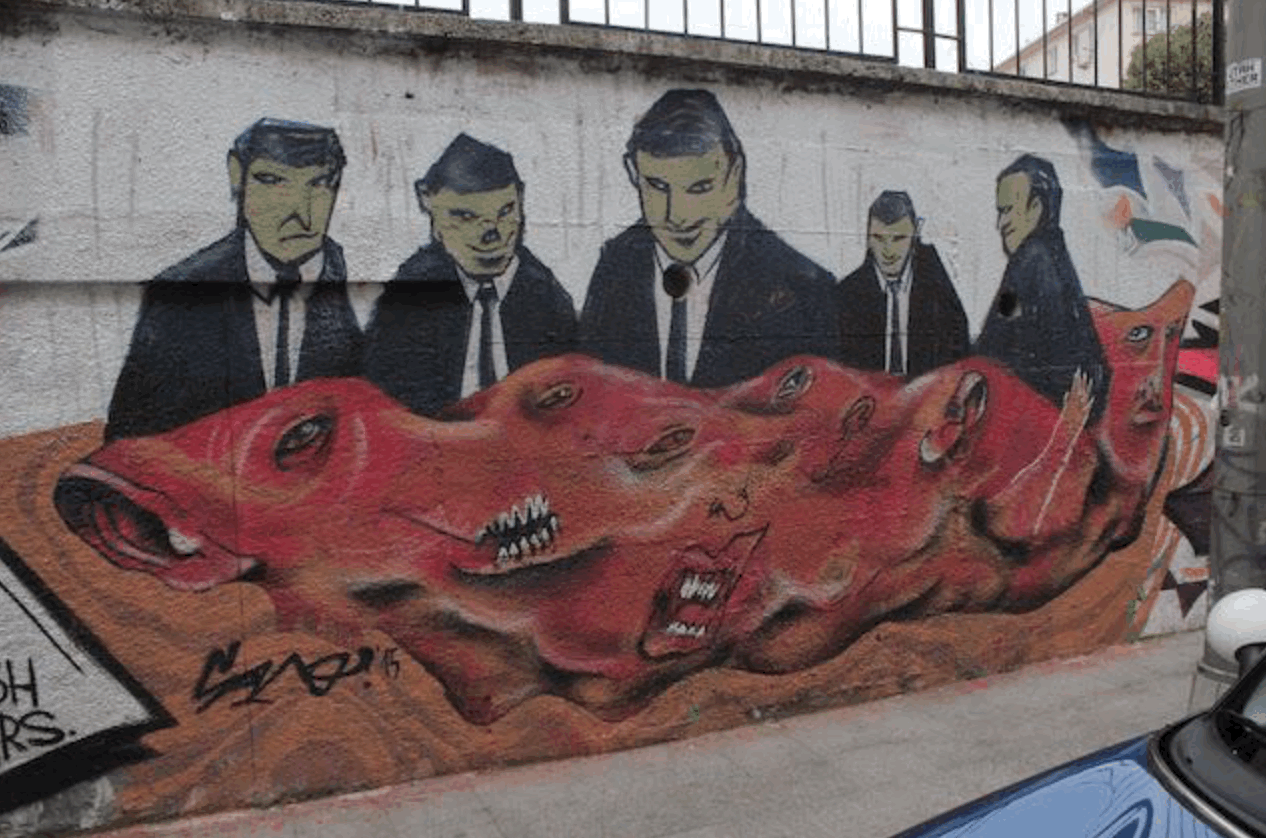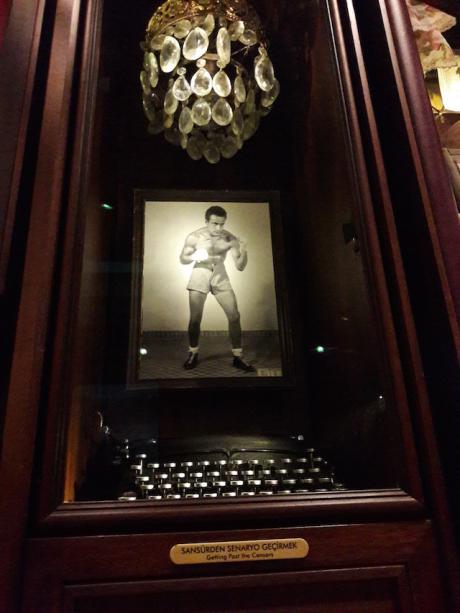"In Turkey, the government uses the media. We use the street - to splash art in their eyes"
Adekan (at Behance)
Great piece from Open Democracy on the artistic response to the clampdown on a free press/media in Turkey. The opening paragraphs detail a depressing litany of controls and harassments of journalists and their organisation (more on the record is here). And then the question:
How to arrive upon the truth without an independent media to arbitrate? One man is stealthily taking it upon himself to fill the vacuum created by the collapse of critical media. He operates anonymously, nocturnally. “I want to awaken what each individual lives in their day-to-day lives in Turkey,” says ‘Adekan’. The street artist wants Turks to reject the status quo and pursue greater freedoms.
Through spray paints and acrylics, the 27-year-old son of a rail-road worker depicts sinners and sufferers on urban walls left unguarded at night. The menacing faces he’s drawn – some human, some animal, some hybrid monsters – pockmark Istanbul. He says he doesn’t assume people will see what he sees in the faces, but some almost explicitly evoke political stooges, while others seem sure to conjure up a universal sense of sad powerlessness. Then there are the pigs. No-one can look at pigs without feeling the need to take a shower.



“I expect people feel ‘fear’, when they see his work,” a fellow street artist, Petuk, tells us as we peer at an image of one of Adekan’s most famous faces. It’s devil-red and carries the word destiny emblazoned on the forehead. Fear perhaps, but appreciation too. The owner of the building façade invited the pair in for Turkish tea after catching them in the act, we’re told.
Others have implored Adekan to draw ‘nice things’ instead. “That response makes me angry,” says Adekan. He’s studying fine art at university but his tag name means blood:
“I draw to make people recoil. So many people watch television without using their brain. But when they are on the street, I want to splash my art in their eyes. The government uses the media; we use the street. The government is controlling [but] everyone comes to the streets.”
The piece goes on to talk about what is a remarkable response to self-censorship - the Nobel prize winner and journalist Orhan Pamuk, and his “Museum of Innocence”:
Pamuk simply can’t practice journalism in Istanbul, the city that made him, without provoking charges of ‘Insulting Turkishness’ and the accompanying prison sentences they bring. A 20 minute boatride away, on the European side of the city, he has curated some protest art of his own.
The Museum of Innocence, a three story private museum based on his book of the same name, is a unique portrait of Istanbul, his life and the struggle to speak uncomfortable truths in climates of fear. It centres on the story of a fictional journalist who hoarded objects from an illegitimate love’s house during a previous post-coup crackdown.
“Disparate objects, when placed side by side, can bring forth unprecedented thoughts and emotions,” is the concept’s claim. Like Adekan, Pamuk has found a means to swerve censorship in an attempt to safeguard Turkish society from losing sight of the repressions being committed, without conventional accountability, in its post-media age.
More from the piece here. And check out our “artists” category for scores of creative interventions to encourage confident citizenship.



